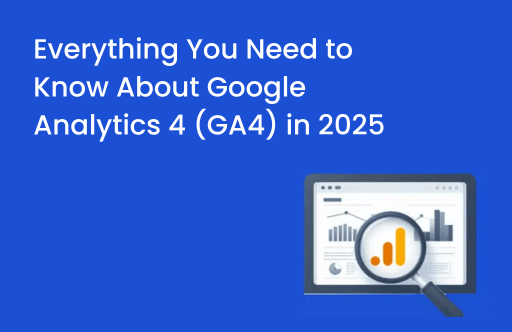Wouldn’t it be wonderful if every customer followed a linear path when making a purchase? Imagine a scenario where a customer becomes aware of your brand, considers your offerings, and confidently makes a purchase, all in one seamless journey without any distractions or competition.
Sounds ideal, right?
However, the reality is that customer behaviour is far from linear. Online shoppers navigate through various touchpoints, from websites and blogs to social media and physical retail stores, creating a complex web of interactions.
In this article, we’ll explore the power of customer data platforms (CDPs) and how they can help businesses effectively manage and leverage customer journeys. Let’s dive in!
What is Customer Data Platform(CDP)?
A customer data platform (CDP) is a software application that collects data from numerous touch points and organizes it into a single, comprehensive customer database. Businesses can significantly enhance their marketing and customer service efforts using this resource across various platforms.
Let’s illustrate this with an example. Imagine you own an online business with a strong social media presence. Your customers can contact you through various channels like Facebook, Instagram, email, or your website.
With a CDP, you can effortlessly gather information from all these touchpoints, consolidating it into a user-friendly customer profile. This profile will provide insights you can utilize on platforms like Facebook ads to create highly targeted marketing campaigns.
These data-driven insights provide businesses with several benefits. 48% of advertisers report a better understanding of the customer journey, while 50% consider enhanced reporting and measurement as the most significant CDP benefits.
What are the Different Kinds of Customer Data?
To understand how a customer data platform works, it’s essential to familiarize yourself with the various types of customer data that are crucial for businesses. Here are the four main kinds of customer data that CDPs collate:
1. Identity Data:
Identity data is the fundamental information that helps businesses identify their customers. It includes their names, ages, genders, addresses, phone numbers, and social media profiles, among other essential details.
By leveraging identity data, businesses can create detailed customer profiles and personalize their communication effectively.
2. Descriptive Data:
Descriptive data provides a more holistic picture of your customers. While descriptive data varies from business to business, it typically includes a customer’s career details such as their industry, title, income, and lifestyle information such as type of home, vehicle, etc.
It may also include family information and subscription habits. These details help companies tailor their offerings to suit their customers’ needs and preferences better.
3. Behavioral Data:
Behavioural data helps businesses understand how customers interact with their organization. It includes quantitative information about actions, reactions, and transactions.
This data includes the number and type of products purchased or returned, abandoned carts, click-throughs, website visits, product views, customer service interactions, etc.
Analyzing this data allows businesses to gain insights into customer engagement and tailor their strategies accordingly.
4. Qualitative Data:
Qualitative data are non-numeric data. They include information about customer motivation, how they discovered your brand, their opinions on your product and services, etc.
These data points add depth to customer profiles by identifying their preferences, such as favourite colours, foods, fashion, etc. They help businesses understand customers on a more personal level.
How does Customer Data Platform (CDP) work for Customer’s Data Activation?
A Customer Data Platform (CDP) consolidates the different types of customer data and offers a complete view of each customer. By making this data easily accessible, businesses can use it effectively for marketing purposes.
Here are the tips on how a CDP helps to activate customer data and optimize marketing spending:
1. Targeted Campaigns:
Businesses can create highly targeted marketing campaigns only when they understand their customers deeply. CDPs foster customer understanding by segmenting customers based on their characteristics and past interactions so companies can personalize their messaging and offers.
This targeted approach increases the effectiveness of marketing campaigns and reduces wasted resources on reaching irrelevant audiences.
2. Channel Optimization:
CDPs analyze customer data to identify the most effective channels for customer engagement. Businesses can allocate their marketing budget wisely by determining which channels—such as email, social media, or mobile—have the highest impact.
This ensures that resources are focused on channels that yield the best customer engagement and conversion results.
3. Customer Journey Optimization:
Businesses can map the customer journey using CDP data and identify key touchpoints and motivational information. This insight allows them to optimize their marketing spending by strategically investing in activities that significantly influence customers to convert.
CDP data also help them understand where customers are in their journey so they can deliver relevant messaging that motivates them to convert.
4. Budget Allocation and ROI Analysis:
CDPs also provide insights into the performance of marketing campaigns. Businesses can analyze customer interactions, conversions, and revenue generated and measure the ROI of their marketing efforts.
This information helps them make informed decisions about budget allocation, ensuring that marketing spending is directed towards initiatives that yield the highest ROI.
Unlock the Potential of Your Data with a Customer Data Platform
In today’s data-driven world, the importance of customer data platforms for businesses cannot be overstated. As customer journeys and data complexity continue to evolve, the significance of CDPs is expected to grow even further in the coming years.
The success of your business relies on how well you know your customers. 78% of data leaders believe that businesses must have real-time data. By investing in a reliable customer data platform, you can make informed business and marketing decisions based on real-time, up-to-date customer insights.
If you’re ready to move to the next step of personalizing customer experiences, a customer data activation platform is the right tool for you.







